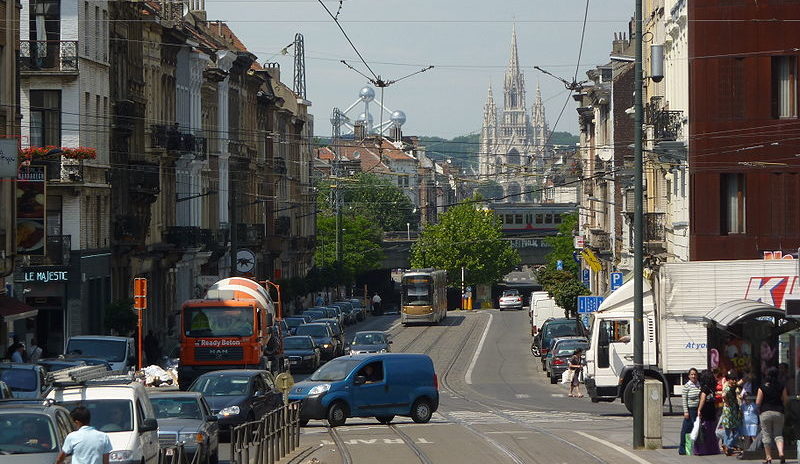Local measurements have shown that air pollution on some streets of the Brussels municipality of Schaerbeek is comparable to that of one of the region's biggest axes, raising concerns among locals.
Air quality in the Brussels-Capital Region – one of the most polluted places in Europe – has improved significantly in the past decade: nitrogen dioxide (NO2) concentrations – one of the pollutants with the highest documented impact on human health – have dropped remarkably. This improvement is driven by national and regional measures, including the Low Emission Zones (LEZ), progressively eliminating the most polluting vehicles.
However, measurements by Brussels city movement Bral show that, on a more local level, the region still has a long way to go. In Schaerbeek, it measured air quality with residents for six months as part of the ExpAIR project. They found that on several residential streets, the air quality was almost as bad as on the Arts-Loi axis, one of the region's busiest intersections located on the Small Ring Road.
"This analysis underlines the importance of mapping pollution locally and measuring at local points," Bral's Eva Forceville, Project coordination for ExpAIR, told The Brussels Times. "We would never have thought that the air quality on the residential streets where we measured would be comparable to a busy traffic axis. This is a cause for concern."
Concerning results
The results from its 13 local measurement stations in Schaerbeek's Collignon neighbourhood showed that, in all places, NO2 values were well above the World Health Organisation's (WHO) recommended average of 10µg/m³.
Comparing the findings with the values of the official measuring stations of Brussels Environment, Bral highlighted that Rue Rubens and Rue des Coteaux, both residential streets where people live and children are regularly seen playing outdoors, were as polluted as Arts-Loi (30.7µg/m³ and 30.1µg/m³ compared to 31.3µg/m³ at Arts-Loi). Bral argued that the dominance of cars in the municipality is the root of the problem, with more than half of measured NO2 values coming from traffic.
Outgoing Brussels Minister of Climate, Environment and Energy Alain Maron (Ecolo) said the results once again demonstrate the importance of maintaining the LEZ in the region. In fact, he believes it must be "taken even further to meet WHO standards and European climate ambitions," hinting to the ideological differences between centre-right French-speaking parties and centre-left Flemish parties in the Brussels formation talks.
However, Forceville stressed that, aside from limiting traffic on a regional level, local changes are also key to improving air quality, for example by improving street architecture.
The project was unique in the sense that citizens themselves decided where the measuring points were placed. While this meant citizens became more informed about the complexities of air pollution, it also resulted in growing concerns. "This has had a palpable impact on citizens. Some people living on streets where the measurement points showed very poor results are now considering moving away." Other locals are demanding action from the future municipal government following the upcoming local elections in October.

